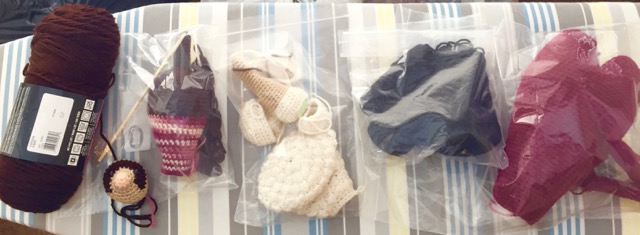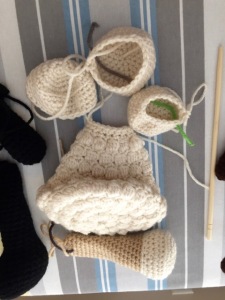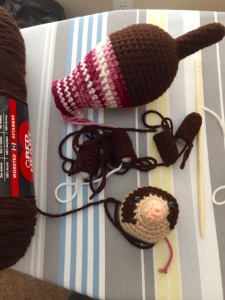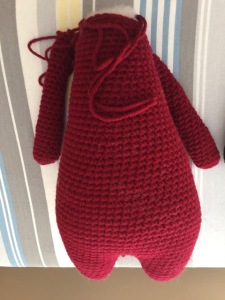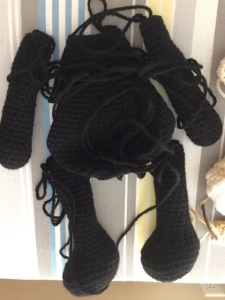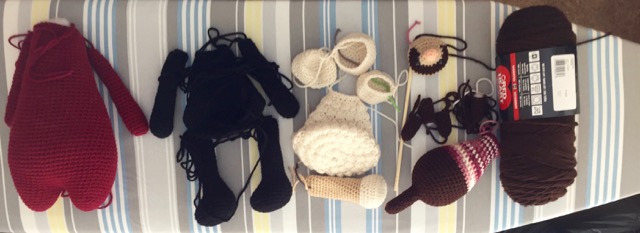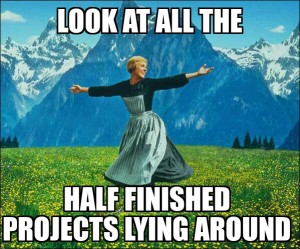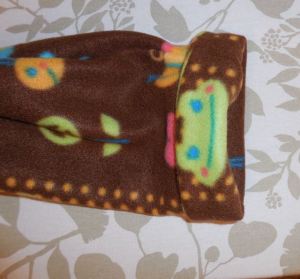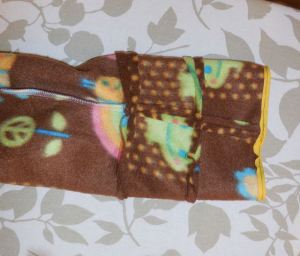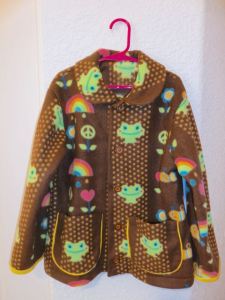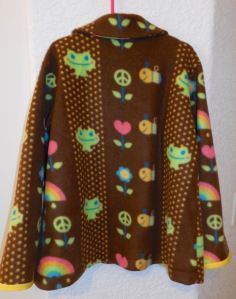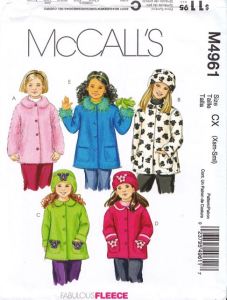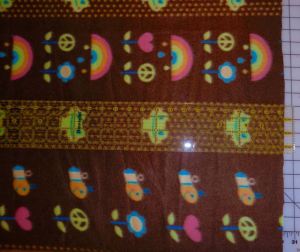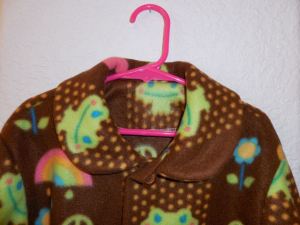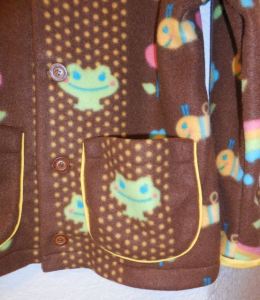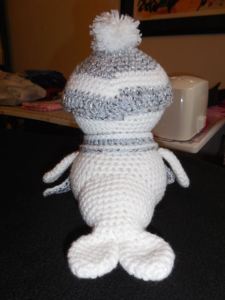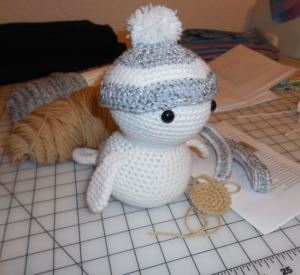 I don’t know how old Mom’s serger is but I do know that it is really old, old enough to have knob tensions and be extremely difficult to thread. I also know that it has been giving her fits for years. It has a hard time holding its tensions and the lower looper thread keeps breaking. She has had it in for repairs and service many times, but it just never seem to be fixed or to work correctly especially in the last several years. It was another phone call from Mom one week before Christmas, bemoaning that fact that Christmas was just one week away and that her serger would just not behave so she could get her Christmas sewing finished, that finally prompted me to push Mom again to get a new serger.
I don’t know how old Mom’s serger is but I do know that it is really old, old enough to have knob tensions and be extremely difficult to thread. I also know that it has been giving her fits for years. It has a hard time holding its tensions and the lower looper thread keeps breaking. She has had it in for repairs and service many times, but it just never seem to be fixed or to work correctly especially in the last several years. It was another phone call from Mom one week before Christmas, bemoaning that fact that Christmas was just one week away and that her serger would just not behave so she could get her Christmas sewing finished, that finally prompted me to push Mom again to get a new serger.
Years ago when mom’s serger started to act up, I tried to help her replace her serger. When I looked into the available sergers at that time, I found there were two types, the expensive ones, $2000 to $3000, with all the bells and whistles, and the cheap sergers, $200 to $300, with no features and that barely serged. What happened to a nice $500 to $1000 machine that had just a few features but still serged nicely? At the time, Mom was not sewing as much as she use to, so she did not want to spend a large amount of money on a new serger, so a Singer serger from Walmart was purchased.
 Big mistake! The machine was horrible!
Big mistake! The machine was horrible!
It rattled and vibrated and did not serge well at all! It was not long before mom had pushed that serger into the corner and went back to fighting with her old, original serger.
Over the years, I have kept an eye on the big expensive sergers, hoping that one might have that special feature that would make it worth the dollar amount it was demanding. But, I never found one that was worth the price. So, as mom complained about her serger, I did not know what to say. Now, I love my serger so I decided to try and help mom by finding a used serger like mine. After some time looking, I did not find a good used serger similar to mine, but I did find a lot of useful information about sergers.
 It seemed that most of the newer more expensive sergers that were purchased were hated, with many owners regretting their purchase and they were trying to rid themselves of their new serger’s on eBay. Most said that because there were so many special features that the machine did not serge well or even perform the special features well. It was a bad case of featuritus. On the other hand, almost all the reviews for the cheap sergers could be summed up to one phrase – piece of crap. So once again, where were that middle of the line sergers?
It seemed that most of the newer more expensive sergers that were purchased were hated, with many owners regretting their purchase and they were trying to rid themselves of their new serger’s on eBay. Most said that because there were so many special features that the machine did not serge well or even perform the special features well. It was a bad case of featuritus. On the other hand, almost all the reviews for the cheap sergers could be summed up to one phrase – piece of crap. So once again, where were that middle of the line sergers?
This time though I found one of those great middle of the line serger’s, the Brother 3234DT. This serger had several great special features, but none that took away from it’s main function, serging.
 I told Mom what I had learned and she decided to take a chance and to get one of these new Brother 4 thread with differential feed sergers. When it was unpacked and the owner manual read, I helped Mom thread the serger. It threaded very easily with color coded lay in threading, dial tensions, and even auto needle threaders. I then showed Mom the adjustable stitch length and width, and differential feed like my serger has. Mom was very excited about these features. But, Mom’s new serger had some special features that mine did not. One of these features is the auto needle threader. Another feature that this serger has is a free arm. The table portion of the serger can be removed and there is a free arm for serging cuffs and collars. Man, wouldn’t that be handy
I told Mom what I had learned and she decided to take a chance and to get one of these new Brother 4 thread with differential feed sergers. When it was unpacked and the owner manual read, I helped Mom thread the serger. It threaded very easily with color coded lay in threading, dial tensions, and even auto needle threaders. I then showed Mom the adjustable stitch length and width, and differential feed like my serger has. Mom was very excited about these features. But, Mom’s new serger had some special features that mine did not. One of these features is the auto needle threader. Another feature that this serger has is a free arm. The table portion of the serger can be removed and there is a free arm for serging cuffs and collars. Man, wouldn’t that be handy  while sewing baby sleepers? An extended table also came with this serger. Once again the side is removed and replaced with an extended table that would come in very handy when serging heavy or large items. I was so excited about the extra features of this serger that I thought for a moment about replacing my serger with one of these, but then I decided that there was nothing wrong with my serger and it did not need replacing. (But, if and when my serger does need replacing, I know which serger I will look at first.)
while sewing baby sleepers? An extended table also came with this serger. Once again the side is removed and replaced with an extended table that would come in very handy when serging heavy or large items. I was so excited about the extra features of this serger that I thought for a moment about replacing my serger with one of these, but then I decided that there was nothing wrong with my serger and it did not need replacing. (But, if and when my serger does need replacing, I know which serger I will look at first.)
 Mom seemed very happy with her purchase. She has sewn a couple of things with her new serger so far and says it serged like a dream. No more nightmares from using that old serger. I am happy that she has a good working serger now and that she can enjoy sewing and serging once again. Plus, along the way I learned a lot about sergers that I did not know before.
Mom seemed very happy with her purchase. She has sewn a couple of things with her new serger so far and says it serged like a dream. No more nightmares from using that old serger. I am happy that she has a good working serger now and that she can enjoy sewing and serging once again. Plus, along the way I learned a lot about sergers that I did not know before.
So until next time, sew forth and serge on!

